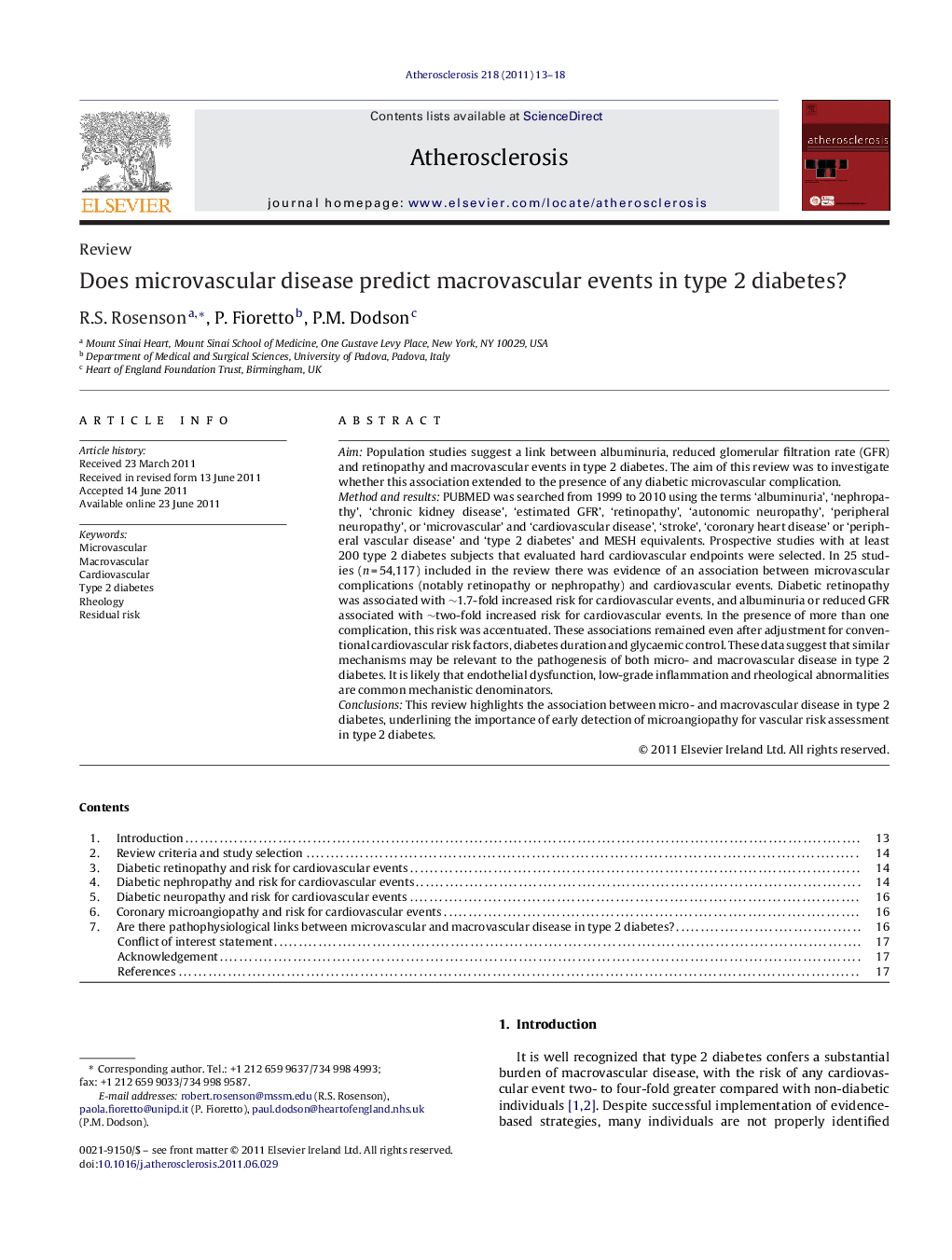| Article ID | Journal | Published Year | Pages | File Type |
|---|---|---|---|---|
| 5950509 | Atherosclerosis | 2011 | 6 Pages |
AimPopulation studies suggest a link between albuminuria, reduced glomerular filtration rate (GFR) and retinopathy and macrovascular events in type 2 diabetes. The aim of this review was to investigate whether this association extended to the presence of any diabetic microvascular complication.Method and resultsPUBMED was searched from 1999 to 2010 using the terms 'albuminuria', 'nephropathy', 'chronic kidney disease', 'estimated GFR', 'retinopathy', 'autonomic neuropathy', 'peripheral neuropathy', or 'microvascular' and 'cardiovascular disease', 'stroke', 'coronary heart disease' or 'peripheral vascular disease' and 'type 2 diabetes' and MESH equivalents. Prospective studies with at least 200 type 2 diabetes subjects that evaluated hard cardiovascular endpoints were selected. In 25 studies (n = 54,117) included in the review there was evidence of an association between microvascular complications (notably retinopathy or nephropathy) and cardiovascular events. Diabetic retinopathy was associated with â¼1.7-fold increased risk for cardiovascular events, and albuminuria or reduced GFR associated with â¼two-fold increased risk for cardiovascular events. In the presence of more than one complication, this risk was accentuated. These associations remained even after adjustment for conventional cardiovascular risk factors, diabetes duration and glycaemic control. These data suggest that similar mechanisms may be relevant to the pathogenesis of both micro- and macrovascular disease in type 2 diabetes. It is likely that endothelial dysfunction, low-grade inflammation and rheological abnormalities are common mechanistic denominators.ConclusionsThis review highlights the association between micro- and macrovascular disease in type 2 diabetes, underlining the importance of early detection of microangiopathy for vascular risk assessment in type 2 diabetes.
⢠Microvascular complications of diabetes are associated with an increased risk of cardiovascular events in type 2 diabetes patients. ⢠Coronary microangiopathy, abnormal coronary flow reserve in the absence of documented flow-limiting coronary artery stenosis, is an independent prognostic indicator of cardiovascular events in type 2 diabetes patients. ⢠In randomized, placebo-controlled, double-blind, clinical trials, treatment with fenofibrate prevents microvascular complications of type 2 diabetes.
